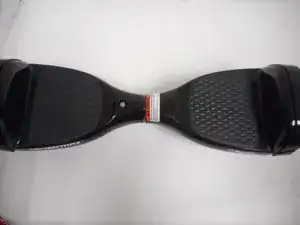
Anti-Slip Pads
These are some common tools used to work on this device. You might not need every tool for every procedure.
For any issues you are having with your Razor Hovertrax 2.0, refer to this troubleshooting guide, to identify and fix some common issues.
The Razor Hovertrax 2.0 was released in 2015, and was the successor to the Razor Hovertrax. The Hovertrax 2.0 has two models a standard and a DLX variety. The unit is an electric self-balancing scooter that has numerous upgrades over the original model. The upgrades include better stability, lighting, and a better frame. The unit uses a gyroscope to balance itself. One of the main focuses with this iteration of the Hovertrax is safety. Anti-slip pads where your feet go, enhanced batteries, and rubber tires all aid in improving the safety of Hovertrax 2.0 compared to the original Hovertrax.
The Razor Hovertrax 2.0 can be identified in numerous ways. One of the most effective ways is by looking for any label or marking that has Hovertrax 2.0 on it. Another method would be looking for the serial number, which should be located on a sticker on the bottom of the unit, and check the serial number to ensure it is a Hovertrax 2.0
Here are the technical specifications of the Razor Hovertrax 2.0: